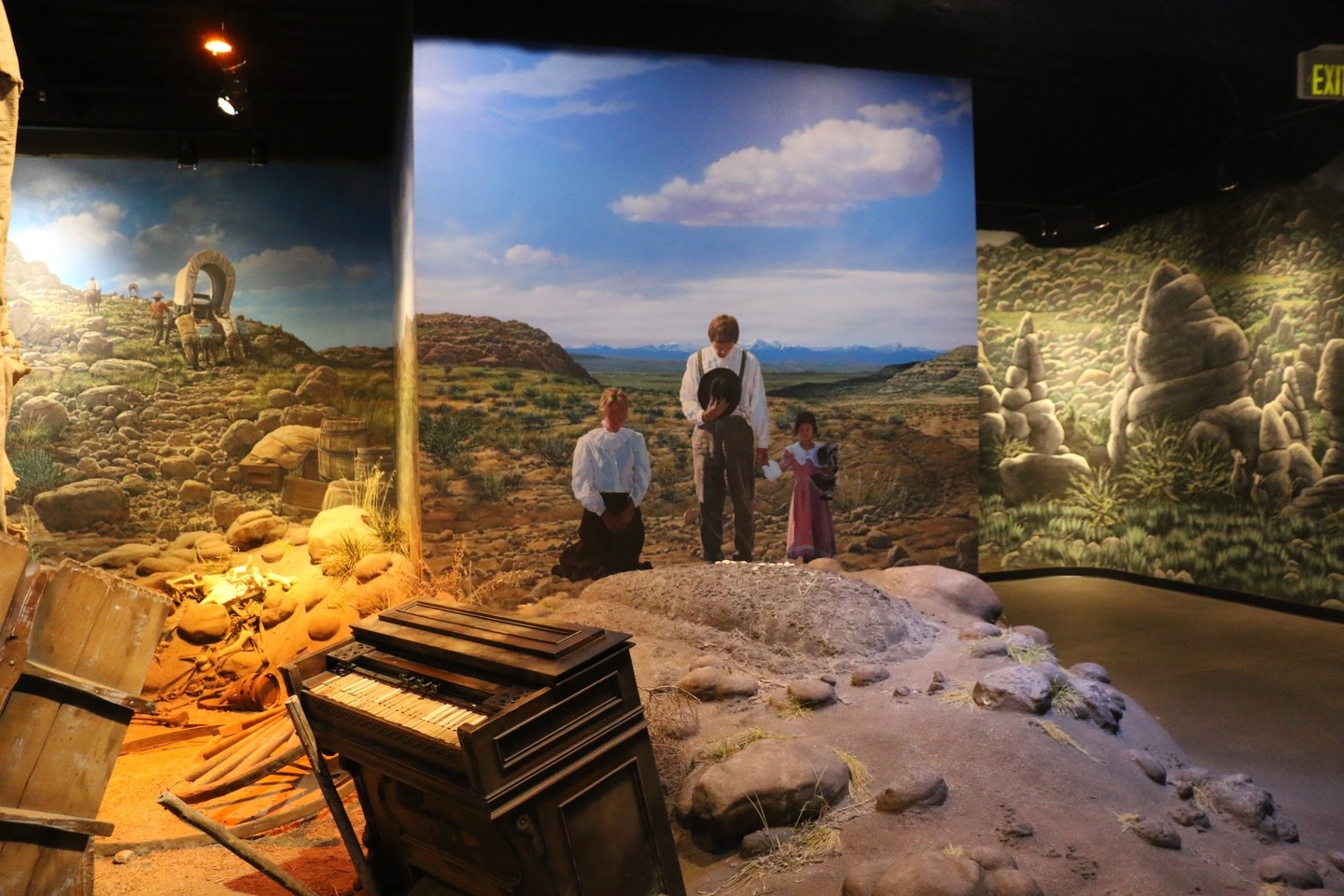
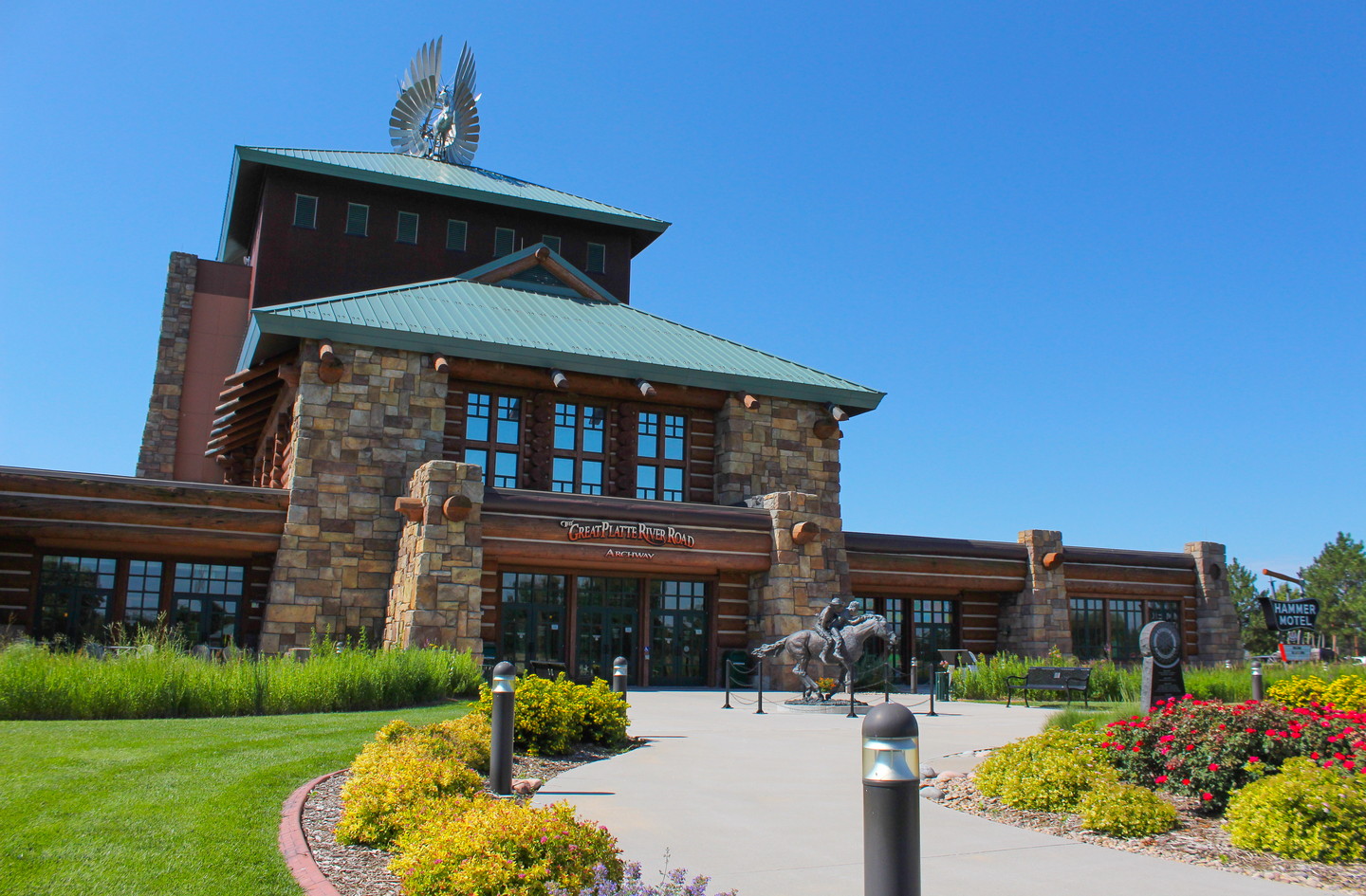
Flyover country. Flat and boring. Nothing to do. These are some common perceptions of the United States’ Midwest region, including the state of Nebraska. A jaunt across Interstate 80, the country’s east-west coast-to-coast freeway that cuts all the way across the state, helps to reinforce that perception at times. However, it’s impossible to miss the towering monument spanning 308 feet across the road just before the central Nebraska city of Kearney that interrupts the seemingly endless cornfields and open skies. From the outside, it hints at a bigger story that a few steps off of the interstate brings and the surprising amount of history, culture and things to do the state offers.
The Great Platte River Road Archway, known more concisely as The Archway, is a monument to adventure and travel. Named after the adjacent Platte River, The Archway rests along the route of wanderers that has included migrating sandhill cranes for millennia, Native Americans who first inhabited the land and then later the journeys of pioneers, the transcontinental railroad and finally, modern traffic.

Since it opened in 2000, the monument has hosted more than 1.5 million visitors. A trip inside will show you why it’s worth the stop.
The Archway is easy to spot from the road and correspondingly easy to get to. Eastbound and westbound travelers on Interstate 80 simply get off the road at Exit 275 (due to seasonal road construction, you will want to check the website to make sure the exits are open and plan accordingly). Parking is free all day. On your way inside, stop and observe a collection of sculptures near the entrance paying tribute to pioneers as well as a giant bison.
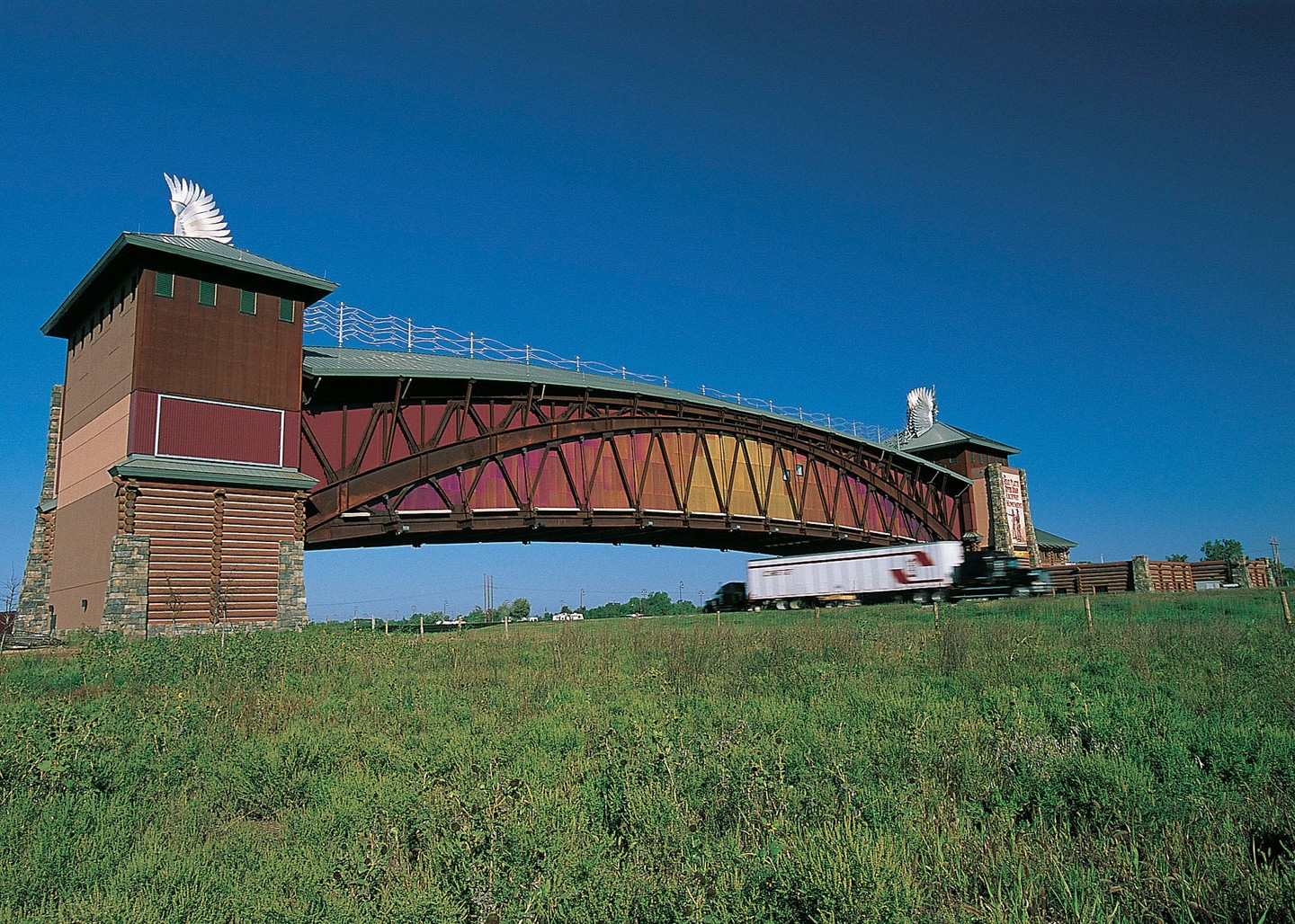
Once inside, there is plenty to see before diving into the complete experience. The ground floor is available free of charge before you head into the main exhibit. The gift shop is as extensive and well-stocked as you’ll find in Nebraska, with everything including hand-made crafts and jewelry to fiber arts, local foods, toys, books, clothing and more. Around the corner is an extensive collection of Western art as well as the Archway Mining Company, an interactive game for the whole family, giving a taste of what gold-seeking miners were after when they took this road in the mid-19th century.
If you’re ready to get the museum portion of your experience underway, you’ll need to purchase a ticket. They can be secured in advance through the website or bought on-site (prices below). You can enter at any time, just keep in mind the latest you’re allowed to begin is 4:30 p.m., which is half an hour before The Archway closes. You will likely want to take much more time than that to fully experience the exhibits.
The Archway is a multimedia experience. You will pick up a handheld audio device to go along with your tour. You’ll want to take full advantage of this, as the exhibits are brought fully to life with it. A costumed, fully in-character period mountain man greets guests at the start of the journey and gives you instructions for the tour. It’s self-guided and self-paced, but it’s good to know how to work the various audio tracks for each section of the museum. Then, you hop on an escalator and ascend to the above-road section of The Archway to start your travels.
The Archway is divided into sections, each with a specific period of history from the Platte River Road and its own stories to tell. As you walk past each exhibit, you’ll notice a corresponding audio track number from your handheld device. You can lock in and listen to every single one or skip a few, whatever is most interesting to you. The audio is a mix of background information, narration and excerpts from the people of the time, preserved through their own journals and accounts. This gives a whole new layer of life to the experience.
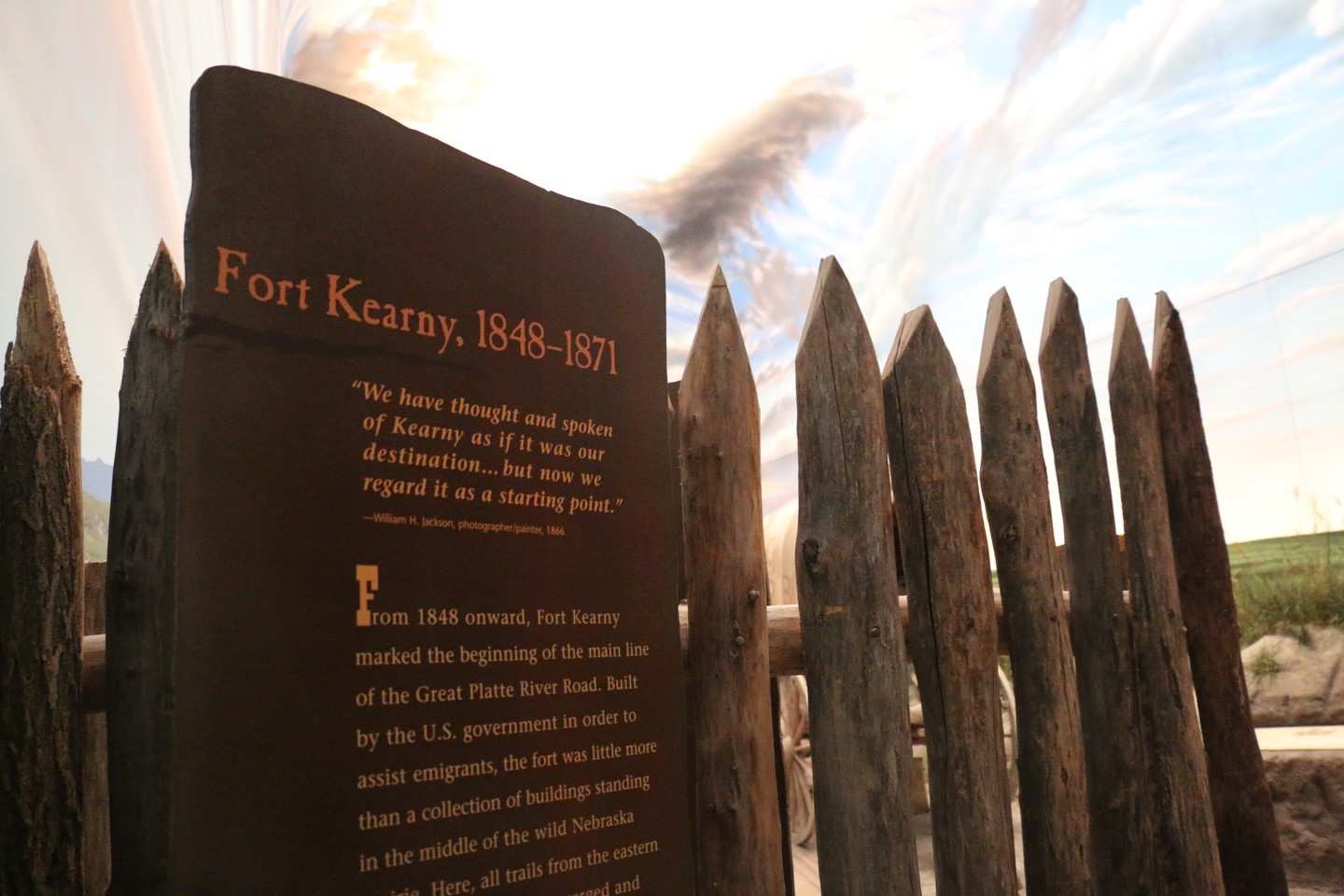
For example, right when you enter the exhibit, you’ll notice a re-creation of Fort Kearny, a military base established in 1848 to protect and resupply Oregon Trail travelers (the site is now a state historical park and is located near The Archway). Flip to the audio track, and you’ll learn all about the fort’s purpose and history as you gaze inside. Move a little further, and you will come across a covered wagon with life-sized pioneer figures, and you can stop here to listen to the stories of real emigrants from that time period. Also, don’t be startled by an impromptu thunderstorm, complete with dimming and flashing lights and thunder sound effects, or a stampede of buffalo that simulate just a bit of the harrowing atmosphere these pioneers endured as they trekked across the country. All of this is against the backdrop of scenically illustrated walls that give the impression of the endless plains, an encampment of the Mormon migration or towering bluffs. It’s multi-sensory elements like these that make for an immersive learning experience, regardless of how much you know about the time period coming in.
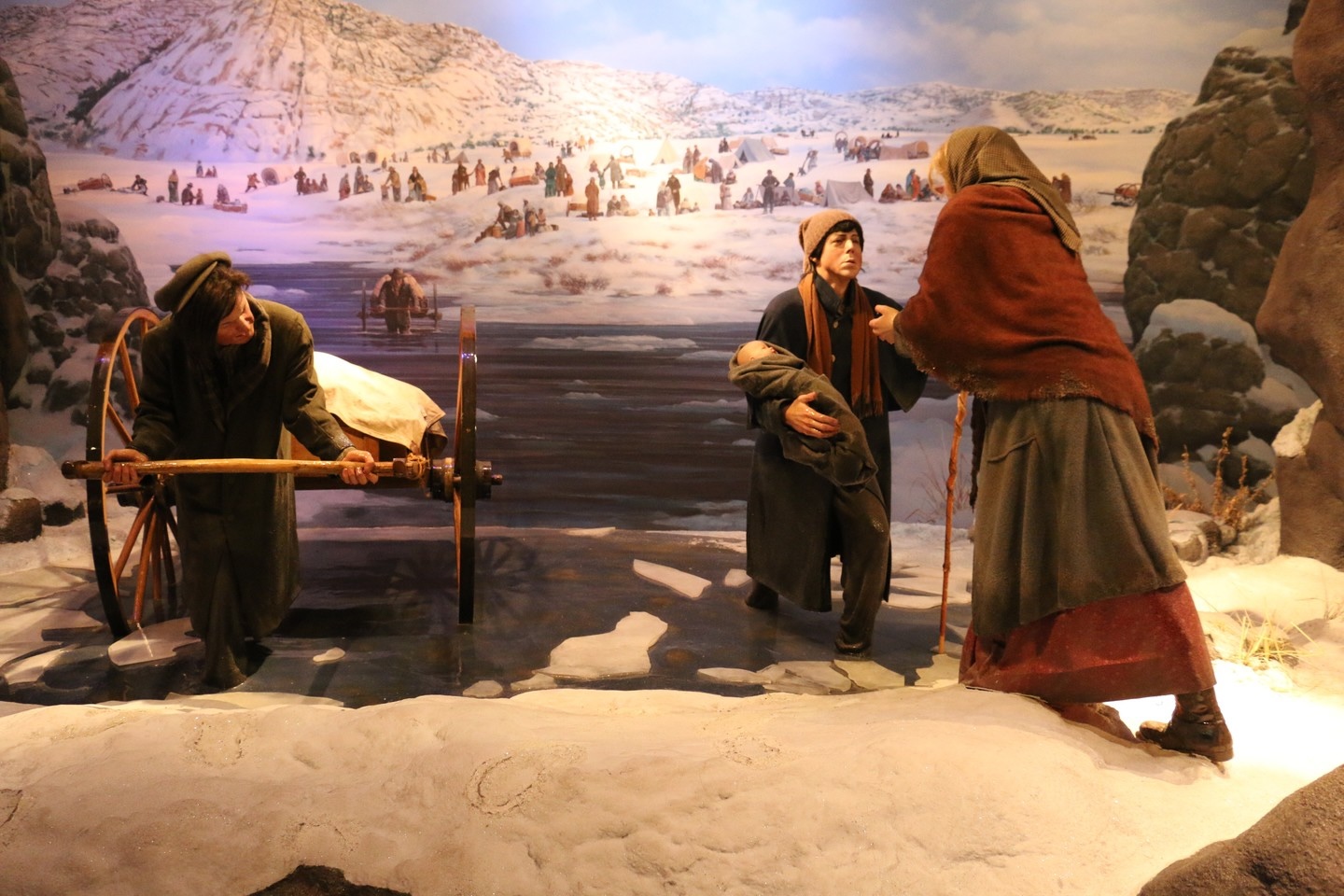
People’s reasons for traveling west varied. 1800s pioneers took the Oregon, California and Mormon trails to settle new land and build lives for their families, strike it rich in gold mining country, be with a religious movement or seek adventure. The Archway tells the stories of many of them. It also doesn’t shy away from the hardships the travelers faced, including exposure to the elements, supply shortages and disease. The exhibit mixes in some period artifacts with the scale statues throughout and dedicates space to acknowledging Native Americans, the land’s first inhabitants long before the arrival of pioneers.
Part of The Archway’s story is the story of technological innovation. It features material on means of travel that soon lost their relevance and died out, including stagecoaches (with a guest appearance by literary giant Mark Twain) and the Pony Express, the short-lived but famous transcontinental service that used a network of riders from 1860-61 to get mail from one end of the country to the other. Both soon lost viability with the invention of the telegraph and the expansion of the transcontinental railroad (completed in 1869), which is also integral to Nebraska and The Archway’s story.
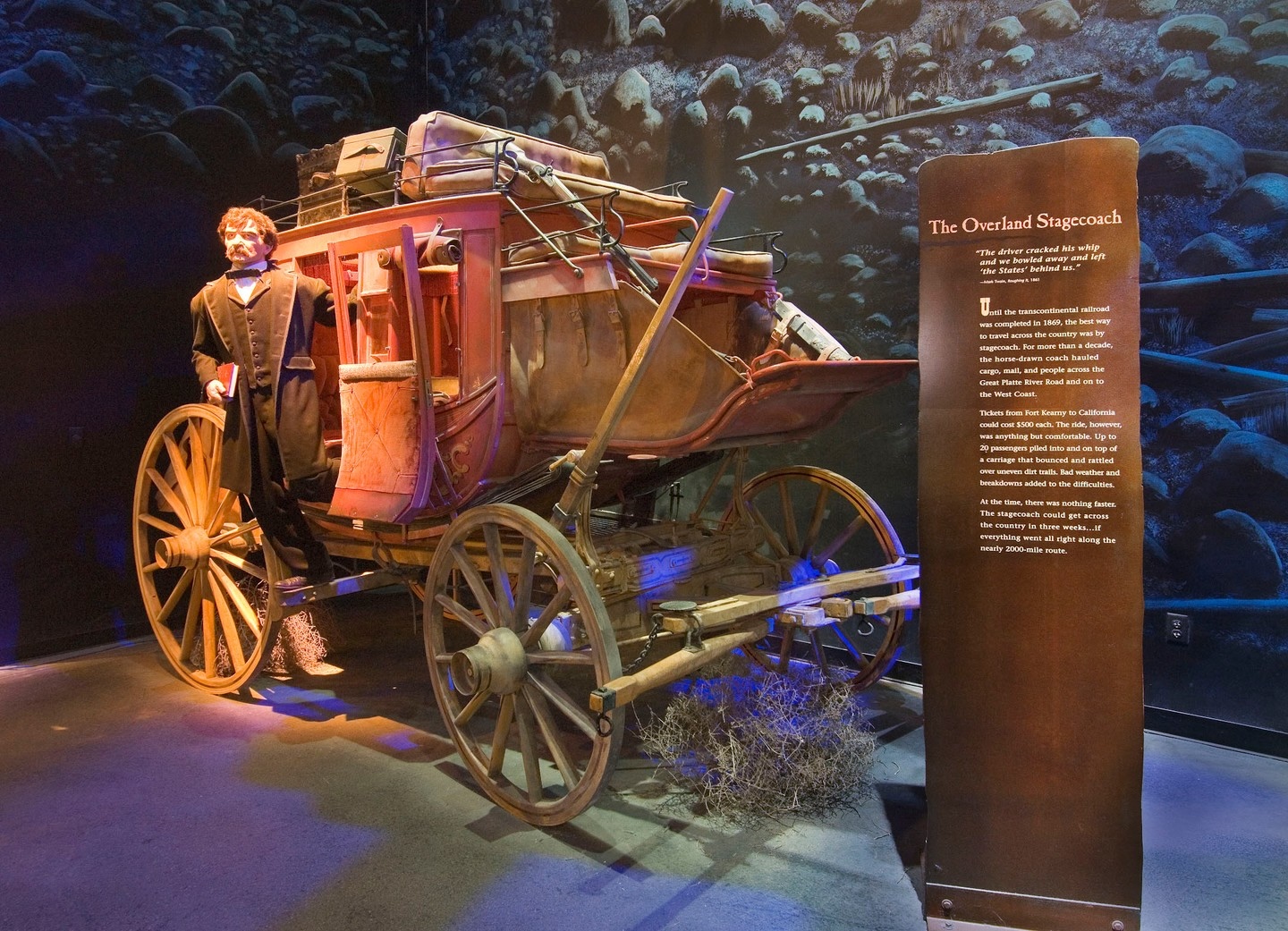
The final stretch of the museum features a tribute to the Lincoln Highway, which was the precursor to the Interstate Highway System of the 1950s, and you’ll see memorabilia that was tied up in America’s blossoming love for road trips, including vintage vehicles and drive-in movie theatres. Finally, you’ll step into a replica roadside diner and get a birds-eye view over the Interstate and be able to track passing traffic speed with a radar gun before heading back downstairs to the ground level.
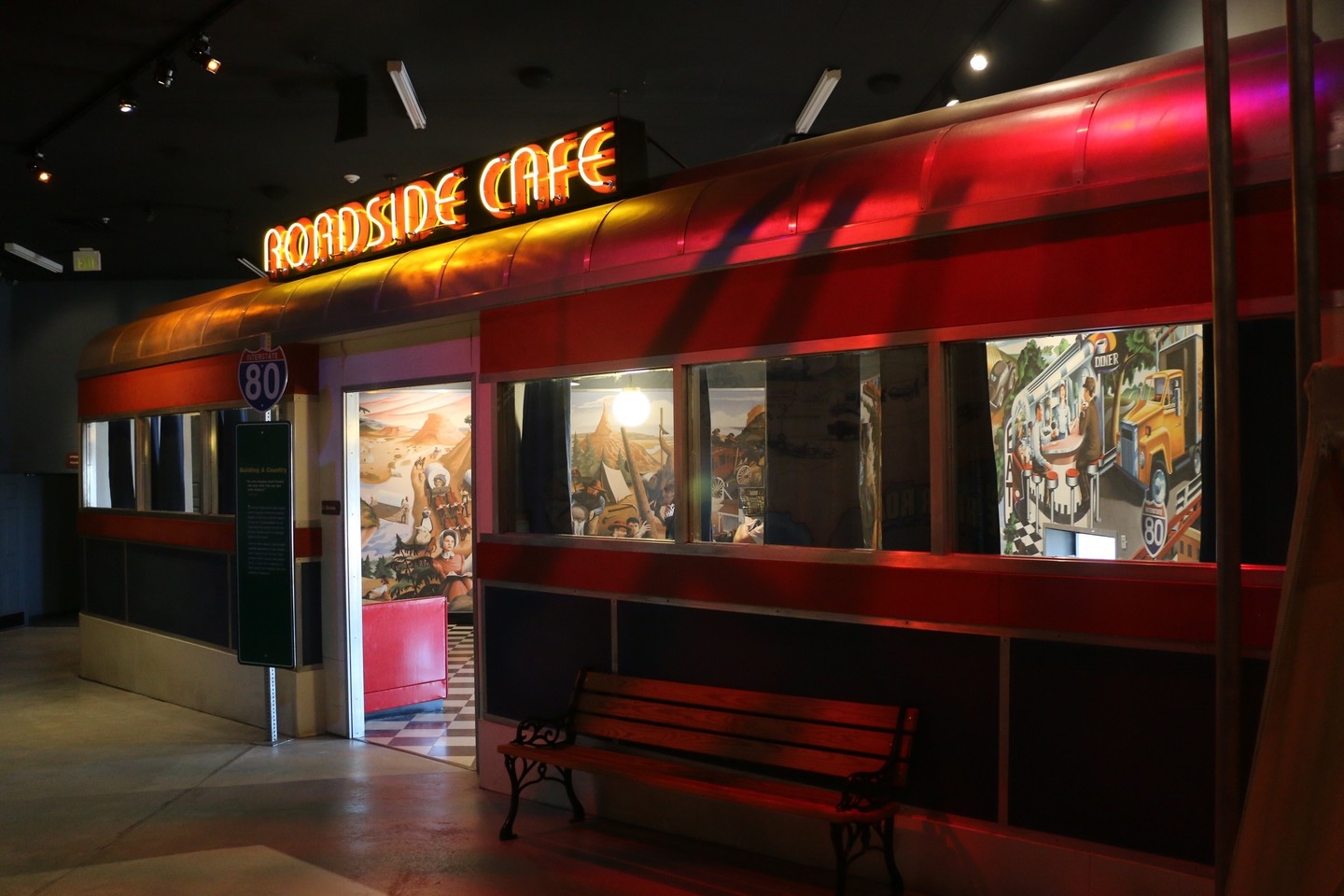
Whatever your perception of roadside museums and attractions is, The Archway is well-equipped to exceed them. It is as easy to get to as can be for Interstate travelers, and whether you have no knowledge of the rich history of the area and its migratory tradition or are already familiar, it is an experience you won’t want to miss. It engages multiple senses and has a little something that everyone in the family can enjoy. It’s great for a self-paced individual visit, easily capable of sustaining high traffic and large groups and it’s popular with tour operators and field trips as well. It’s also fully accessible and has elevators and escalators to its multiple levels.
In the end, it’s all about the spirit of adventure and bravery it took to travel these roads in previous centuries, and even though modern technology makes today’s journey’s much more enjoyable, it’s a spirit worth remembering and celebrating.
3060 E 1st Street
Kearney, Nebraska 68847
Archway Website: https://archway.org/
* * *

Ben Jones is Marketing Content Specialist for Visit Nebraska and helps to tell the state’s stories to travelers through its digital and print communications, including website and social media content creation. A native Nebraskan, he has a bachelor’s degree in Journalism from the University of Nebraska-Lincoln and a master’s degree in Professional Communication from Southern Utah University. He lives in Lincoln and, away from work, he enjoys reading, writing and exploring new places.